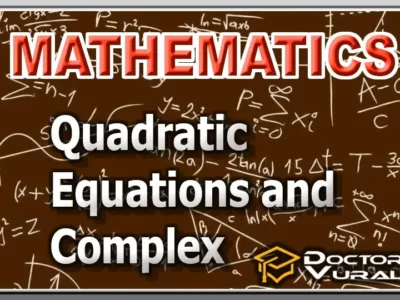Quantum Numbers
Learning Time: 4-12 hours
Content: Quantum numbers are quantum mechanical parameters that describe the positions, energy levels, and behavior of electrons within an atom. This topic covers the principal quantum number (n), angular momentum quantum number (l), magnetic quantum number (m_l), spin quantum number (m_s), as well as the shape and orientation of orbitals. The focus is on fundamental quantum numbers in TYT, while the focus is on multi-electron atoms and applications of the Pauli exclusion principle in AYT. In the current 2025 curriculum, it is also covered in the context of quantum chemistry and nanoelectronics. Learning this topic provides a fundamental understanding of atomic structure and chemical bonding.
- Principal Quantum Number (n):
- Defining Energy Levels
- Number of Layers (K, L, M, etc.)
- Maximum Electron Capacity (2n²)
- Angular Momentum Quantum Number (l):
- Shape of Orbitals (s, p, d, f)
- Range of l Values (0 to n-1)
- Properties of Sub-Scales
- Magnetic Quantum Number (m_l):
- Orbital Orientation
- m_l Values (-l to +l)
- Spatial Distribution (px, py, pz)
- Spin Quantum Number (m_s):
- Electron Spin (+½, -½)
- Pauli Exclusion Principle
- Hund’s Rule and Electron Pairing
- Applications:
- Spectroscopic Analysis
- Quantum Chemistry Simulations
- Nanoelectronic Design
- Affecting Factors:
- Nuclear Charge of the Atom
- Electron-Electron Repulsion
- External Field Effects
- Modern Developments:
- Quantum Computers
- Atomic-Scale Materials
- Spintronic Technologies
Course Features
- Lectures 0
- Quizzes 0
- Duration 5 hours
- Skill level Expert
- Language English
- Students 15
- Assessments Yes







